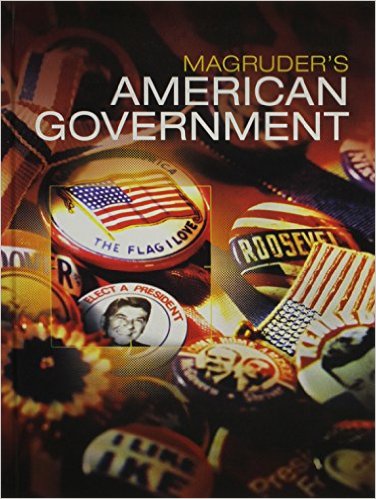
Magruder’s American Government
1st Edition
ISBN: 9780133306996
Textbook solutions
All Solutions
Section 14-3: The Russian Federation
Exercise 1
Step 1
1 of 5
The Soviet Union was a communist country controlled by the Communist Party. In 1985, **Mikhail Gorbachev** became Secretary General of the Government and changed the previous state course.
Step 2
2 of 5
He started two important reforms:
**1. Perestroika** – restructuring of political and economic life
**2. Glasnost** – which means opening and refers to reducing government repression and allowing freedom of expression
Step 3
3 of 5
In addition to reforms, Gorbachev initiated the creation of a legislative body whose 2/3 members were elected in elections – **the Congress of People’s Deputies.**
Step 4
4 of 5
During Gorbachev, **the office of president** of the Soviet Union was introduced. This function replaced the previous highest position in the country, the general secretary of the party.
Step 5
5 of 5
The reforms and changes introduced by Mikhail Gorbachev led to a reduction in the power of the once all-powerful Communist Party and led the country to further democratization.
Exercise 2
Result
1 of 1
Mikhail Gorbachev began to create changes in the Russian government in 1985. He created the Congress of People’s Deputies, a legislative body in which 2/3 of its members were chosen by competitive elections. He replaced the office of general secretary with that of President of the Soviet Union. Boris Yeltsin was elected in the early 1990’s and continued to make changes. Eventually however, he dissolved Parliament and was impeached in return. The face off was resolved with military intervention and the arrest of parliament members. In 1993 a new constitution was created which established the office of president, created the bicameral legislature, and listed protected rights and freedoms. Yeltsin was reelected in 1996 but resigned in 1999 promoting Vladimir Putin from prime minister to president. Putin has served as either president or prime minister ever since.
Exercise 3
Result
1 of 1
The Constitution of 1993 created a system with a President, Prime Minister, and a bicameral legislature composed of the Federation Council and State Duma. Most of the power in this system is held by the President. The President appoints the Prime Minister. There is a Constitutional Court composed of 9 members. The court is empowered to rule on the constitutionality of acts of government, but does not often challenge the power of the President.
Exercise 4
Result
1 of 1
The State Duma is the lower legislative body within the bicameral Russian legislature. It has 450 members who are elected in a nationwide vote. Powers of the State Duma include overriding the veto of the upper house, The Federation Council, with a 2/3 vote. The State Duma also must approve of the President’s selection of Prime Minister. With another 2/3 vote the State Duma can override Presidential vetoes.
Exercise 5
Result
1 of 1
Vladimir Putin is an important and central figure within modern Russia. Putin was elected President in 2000 and 2004. He was again elected President in 2012 after serving as Prime Minister under Dmitry Medvedev from 2008 until 2012. Putinism refers to the concept of a single political party controlling government bolstered by significant economic progress.
unlock

